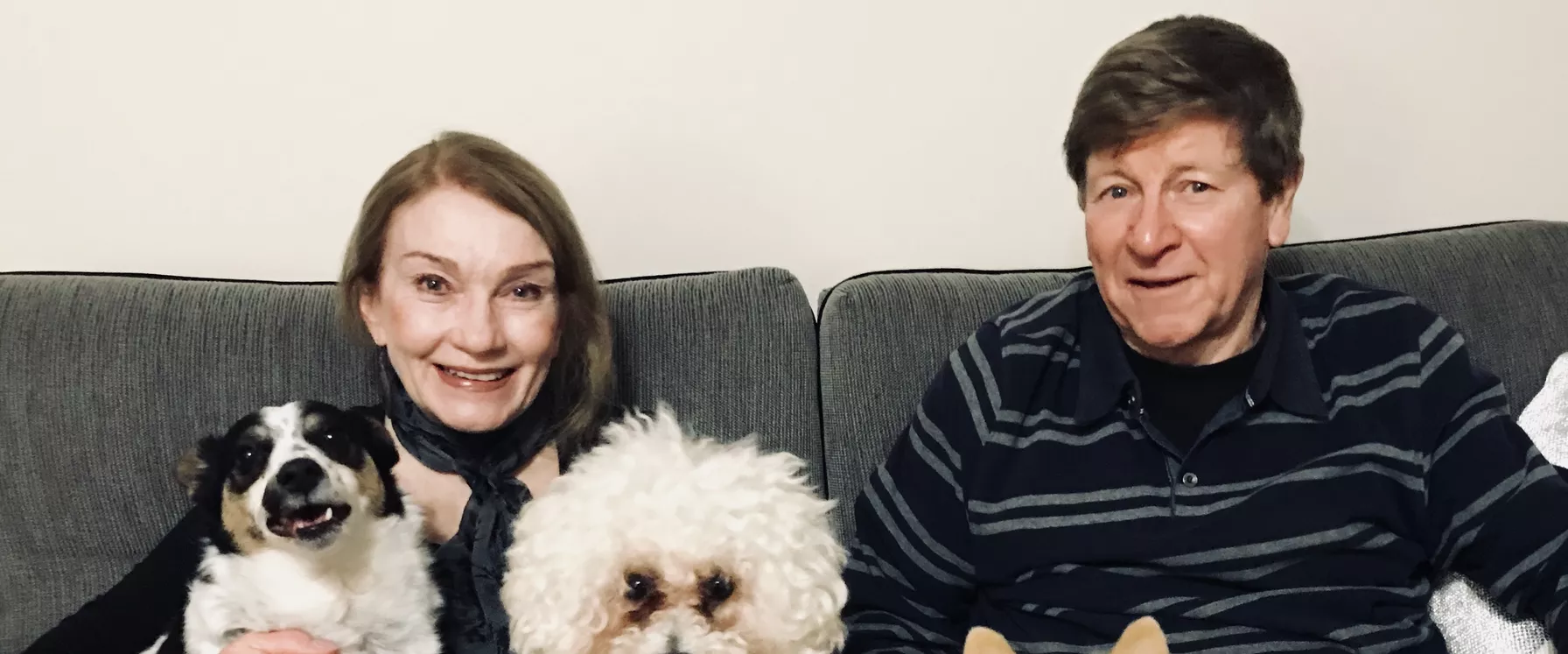Maryanne had been feeling run down, but she put it down to working long hours, driving long distances and being sick with a bad cough along with the flu.
Maryanne had no reason to think anything major was wrong – she was fit from walking every day in her lunch hour, was not overweight and had never smoked. Despite experiencing fever and chills, tiredness and a loss of appetite, she put off seeing the doctor as her work was so busy.
But one morning, Maryanne woke with blurry vision. She had trouble reading her alarm clock, but just thought it needed new batteries. After making her way to the kitchen, she began unstacking the dishwasher but dropped a plate. Then she dropped another plate. She thought to herself that she just needed to go back to bed to sleep off her flu.
When Maryanne’s husband Peter entered the kitchen, he could see immediately she didn’t look well. He helped her to a chair, but she slipped off it as she couldn’t support herself.
Once Peter managed to seat her, he asked her to wave her arm. She couldn’t. When he asked her to hold his hand, Maryanne was absolutely convinced she was squeezing it – but he felt no grip at all.
Peter also noticed Maryanne’s face looked strange, her speech was slurred and she had started dribbling. Little did he know, but he had identified many of the signs of stroke.

Concerned, Peter called for an ambulance. After an assessment upon arrival, the paramedics agreed that Maryanne could be having a stroke and rushed her to hospital for an emergency CT scan. The neurologist diagnosed she had experienced an acute ischemic stroke – where a blood clot blocks blood flow to the brain. Thrombolysis, a procedure to break up blood clots, was immediately administered via a clot-busting drug. This slowed things down a little to give the medical team time to send the CT scans to another specialist hospital and arrange for an endovascular thrombectomy – where the blood clot is removed via suction. Maryanne was transferred to that hospital and immediately into theatre.
“The operating team asked me to shift over a little on the bed, and at this point I realised I was completely paralyzed down my left side. It was a surreal moment. I had no emotions at the time, just a detached curiosity that my body wasn’t functioning properly. It felt very matter of fact, with no correlation between the seriousness and the actual situation. I couldn’t process everything at the time.”
After the procedure, Maryanne was in ICU for four days for close observation. After the first day, she was able to raise her arms when requested. The medical staff were amazed at the pace of her recovery, especially as she was already solving Sudoku puzzles while propped up in the hospital bed.
But Maryanne’s recovery wasn’t all smooth. During monitoring, the staff picked up that she had atrial fibrillation, a heart arrhythmia where the heart beats irregularly or rapidly that is also linked to stroke. As a result, Maryanne will need to take anticoagulants for the rest of her life.
While Maryanne experienced debilitating fatigue and brain fog afterwards, and found herself too tired to speak at times, one of the hardest parts was seeing how anxious and worried her children were, despite her reassurances.
Now, Maryanne keeps a close eye on her health, to give herself the best possible chance of preventing another stroke. She visits her cardiologist once a year for a check-up, visits her other doctors regularly to keep an eye on her blood pressure and other indicators, and ensures her medicine is regularly reviewed and is correct. When she experiences a heart flutter from her atrial fibrillation, she ensures she mentions it to her husband and those around her at the time.
Maryanne is well aware now that time is of the essence when it comes to diagnosing and treating a stroke.
“The neurologist warned that I could have been a vegetable for the rest of my life if they hadn’t done the procedure in time. So it’s important to educate yourself and your family to give yourself the best chance of a full recovery. Call for an ambulance straight away. Never think that what’s happened is in the past and brush it away – always get medical attention as soon as possible.”
How is HRI helping?
HRI is tackling the devastating impact of stroke from a broad range of research angles. Our Heart Rhythm and Stroke Prevention Group is investigating how best to conduct large-scale screening for atrial fibrillation (AF), which is linked to one-third of strokes. If screening for AF could be implemented widely in those aged 65 or older, and this could be coupled with greater prescription of anticoagulant therapy as advised in guidelines, then many strokes could be avoided.
Pioneering research by our Thrombosis Research Group is focused on finding safer, more effective therapies to treat ischaemic stroke. Studies by HRI scientists have already discovered a novel drug class that can safely reduce dangerous blood clotting. They will test this novel drug in combination with thrombolysis to improve the dissolution of damaging blood clots that block blood flow to the brain. The ultimate aim of these studies is to reduce brain damage and improve outcomes post stroke-recovery.

